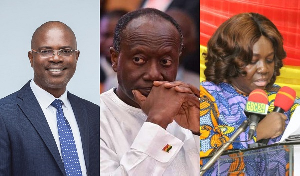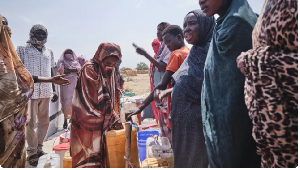Ghana is faced with a stark reality: its infrastructure design and planning system is in shambles which includes buildings, roads, bridges, and railways. The country's urban centres are plagued by natural and man-made disasters, from devastating floods to crippling traffic congestion. The question on everyone's mind is: what's gone wrong?
According to Engineer Ukasha Tiibu Mohammed, a PhD student and researcher at the University of Massachusetts Amherst, the answer lies in Ghana's weak infrastructure design and planning system.
"We've pretended to plan for far too long, and it's resulted in chaos," Engineer Ukasha says. "Our cities are experiencing infrastructure developmental planning problems that could have been avoided with proper planning."
Engineer Ukasha points to the lack of effective design planning as the root cause of Ghana's urban woes. "We're not just talking about aesthetics; we're talking about lives lost, properties destroyed, and economic opportunities squandered," he emphasizes".
The statistics are staggering. In recent years, Ghana has experienced some of the worst flooding in its history, resulting in loss of life and property. Traffic congestion in cities like Accra and Kumasi has become a nightmare, with commuters spending hours stuck in traffic. And yet, despite these challenges, Ghana's design planning system remains woefully inadequate.
So, what's the solution? Engineer Ukasha argues that Ghana needs to strengthen its design planning system, starting with the merging of Ghana Institution of Engineers who is at the heart of Building and Infrastructure with the National Development Planning Commission as one entity that will create design standard and specifications guiding Ghana’s construction industry.
"We need to make the Commission an autonomous body, with the power to guide the national development process based on professional principles," he says.
Engineer Ukasha also emphasizes the need for sustainable development practices, particularly in the construction sector. Such as green building, passive house + and LEED energy conservation in design and construction. "We need to adopt greener building practices, using materials that are environmentally friendly and sustainable," he says.
It's clear that the country has a long way to go in terms of Infrastructure planning and sustainable development. But with experts like Engineer Ukasha sounding the alarm, there's hope that Ghana can turn things around if we inculcate the measures he outlined.
The Statistics
The numbers paint a grim picture:
- According to the Ghana Institute of Engineers, the country loses approximately GH¢700 million (approximately $120 million) annually due to flooding alone (Ghana Institute of Engineers, 2020).
- The United Nations estimates that Ghana's urban population will increase from 14 million in 2020 to 25 million by 2030, putting further strain on already inadequate urban planning systems (United Nations, 2020).
- A report by the United Nations Environment Programme (UNEP) found that Ghana's rapid urbanization has led to the degradation of natural habitats, with 60% of the country's wetlands having been destroyed or degraded (UNEP, 2019).
- The World Bank estimates that Ghana's traffic congestion costs the economy approximately 8% of GDP annually, equivalent to $2.5 billion (World Bank, 2018).
The Consequences
The consequences of Ghana's infrastructure crisis are far-reaching:
- Climate change and sea erosion: Climate change is rampant due to the amount of CO2 emitted during manufacturing and use of concrete by the infrastructure sector. This has exacerbated the heat in the atmosphere which results in the de-icing of the ocean and increases the sea levels causing sea level rise. The rise in the sea level causes us to lose precious lands to the sea and water bodies.
- Loss of life: Building collapses and road accidents claim countless lives each year.
- Economic hardship: Infrastructure failures disrupt businesses, causing economic losses and instability.
- Environmental degradation: Poorly constructed buildings and roads lead to environmental degradation, including pollution and habitat destruction.
The Way Forward
To address Ghana's infrastructure crisis, Mohammed recommends the following:
- Invest in sustainable construction practices, including the use of environmentally friendly materials and energy-efficient designs.
- Develop and implement rigorous building codes and standards to ensure structural integrity and safety.
- Provide training and capacity-building programs for construction professionals to enhance their skills and expertise.
- Encourage public-private partnerships to finance and deliver infrastructure projects, promoting collaboration and innovation.
By taking these steps, Ghana can begin to address its infrastructure crisis and create a more sustainable, resilient future for its citizens.
Opinions of Wednesday, 26 March 2025
Columnist: Ukasha Tiibu Mohammed















